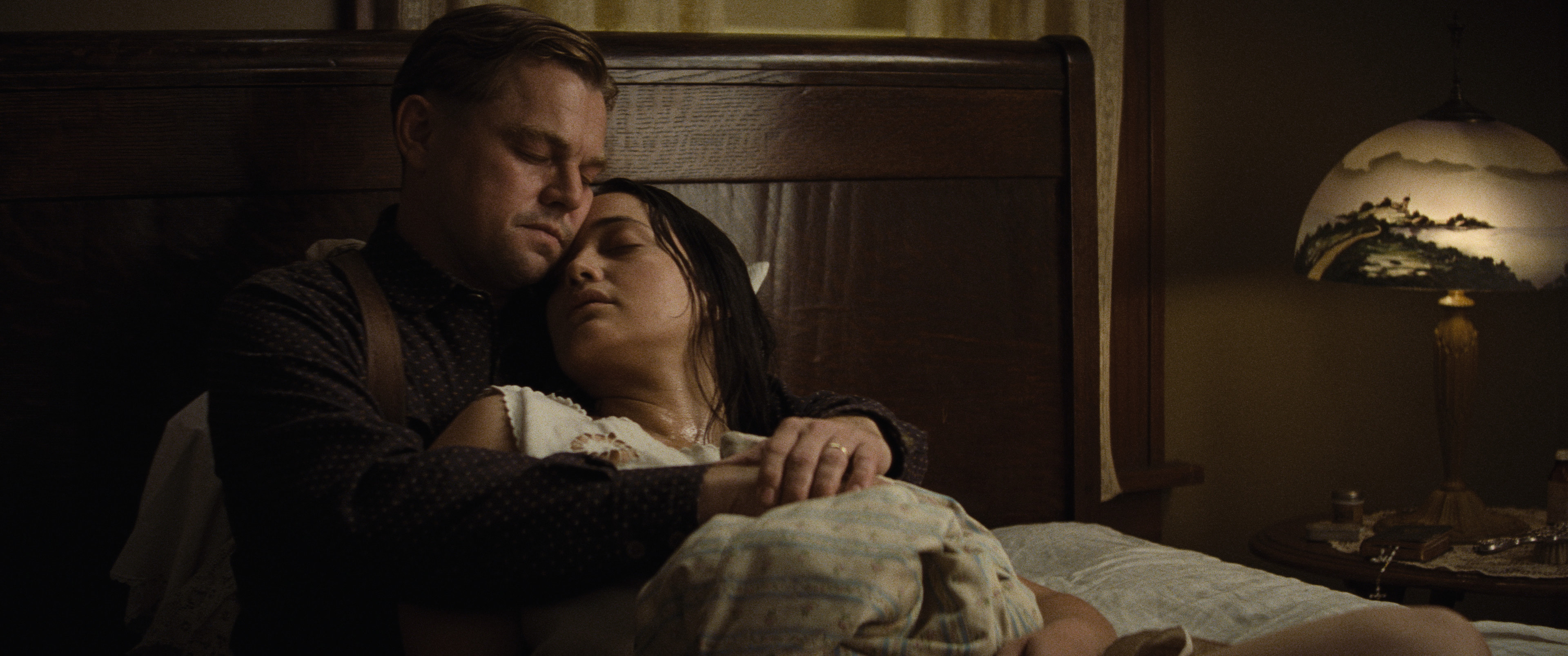February 17, 2024
Killers of the Flower Moon (Martin Scorsese, 2023)

On a Saturday afternoon, Bram and I are attending a screening of Killers of the Flower Moon at the UGC Brouckère in Brussels. In a half-filled theatre, we take our seats for Martin Scorsese’s three-and-a-half-hour epic. It strikes me that this lengthy film about the near genocidal serial killings of Osage residents in 1920s Oklahoma doesn’t only attract seasoned film buffs to the multiplex. Unlike so-called arthouse cinemas, UGC-goers do not usually go to see “a film”, but rather “go to the movies.” The choice of film is usually made on the spot and is therefore hardly decisive; the convivial trip to the movie theatre is what truly counts. Yet the macabre story and extensive length do not seem to deter such viewers, even if the Scorsese-DiCaprio-De Niro playbill is bound to play a role.
Half an hour into the film, a man sitting on in front of us to the right grabs his bag and leaves. I don’t understand why he decides to call it a day so soon: Scorsese’s film has barely begun and the pace at which the director delivers his story is unlikely to induce a sense of ennui. I imagine that the man must have been ill: he’d convinced himself to go to the movies but quickly realized he wasn’t going to last the full three hours. Alternatively, he left after an emergency notice, a case of bereavement or a water leak in his flat, urging him to leave on the spot.
Down one audience member, the film proceeds. At duly measured pace, Scorsese gives his account of the murders. About forty-five minutes before the end, the same man who had left earlier re-enters the theatre. He mounts the stairs of the theatre and continues to watch the film while standing upright for a while. Eventually he settles on a seat slightly higher up, crosswise behind us. What’s come over the man in question? He’s just missed two hours of the film but decided to catch the end anyway. What does he still expect to make of it?
The film ends, the man packs up his things and leaves the theatre as we do. We walk into town and go for a drink. We have little to say about the film – despite the horrors displayed for over three hours, the film proves all too forgettable. I wonder if the man actually missed something. Perhaps his indifference reflected a deeper sense of tedium at what we just saw?
Although Killers uncovers a true massacre buried by history, the film demands little of your attention. For nearly four hours, Scorsese transforms the white screen into an expensive and luxurious strip of wallpaper. The entirety of the film – the renowned actors, the worn renditions, the calculated sense of ambition, the stakes of the historical drama, the scenery’s duly monumental look; signed by film grandmaster Scorsese – is bound to evoke the magisterial aura of cinema as a distinguished art form. As a cinematic product, Killers answers to a total image of cinema, with no loose ends and expertly bricked up; nothing is lacking here. Scorsese thereby serves up a cinematic space utterly saturated, with no perspectives or lines of escape, except for the actual corridors through which viewers can leave the theatre. This lack of exit options does not manifest itself in Killers as a case of being held hostage as a viewer; one is not manipulated or targeted, an experience all too familiar from Haneke’s work. On the contrary: the monumentality simply defuses the film; our involvement is not really required. Killers is a mammoth film, an impenetrable, monolithic edifice occupying considerable space but otherwise hardly disturbing or triggering anything beyond this monumentality. Yet aren’t the most splendid films those that offer not one but countless possible films, revealing a different film with every viewing, porous with countless small openings? Films that also reach out to other films?
Like Christopher Nolan’s Oppenheimer, Killers of the Flower Moon testifies to a new kind of monumental cinema, ambitious in its length, design and premise, which one can experience with conveniently complete passivity. Perhaps the indifferent spectator was just paying homage to the film by roaming through the cinema like a tourist. I imagine him strolling from room to room every Saturday afternoon, sightseeing at one screen and then the next, granting each film the cursory viewing it deserves.
Image from Killers of the Flower Moon (Martin Scorsese, 2023)

